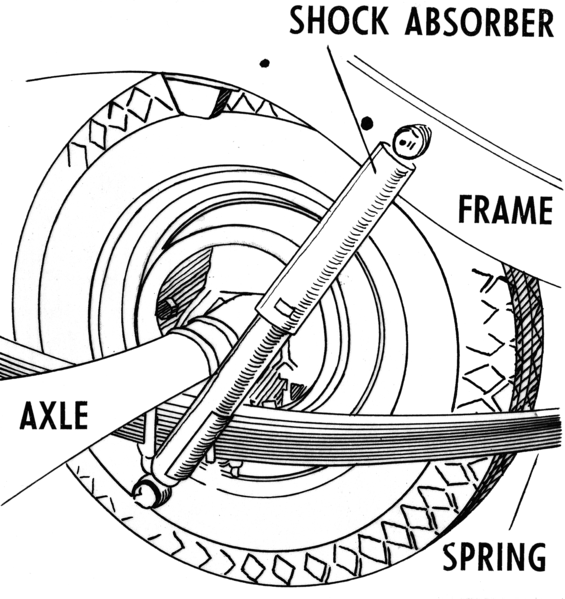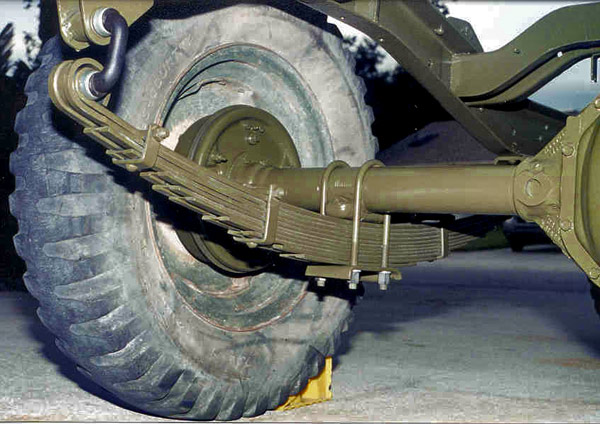Hey there, fellow hot rod enthusiasts!
After diving deep into the roaring world of engines in our last chat, it’s time we shift gears and talk about something that’s equally crucial but often overshadowed – the suspension system. That’s right, that bouncy thing that keeps our beloved rides smooth and our teeth intact. It’s more than just a bunch of springs and shocks; it’s the backbone of our vehicle’s comfort and stability and allows us to cruise down the boulevards we so love.
What’s Suspension, Anyway?
In the simplest terms, the suspension is what connects your hot rod to its wheels. Imagine riding a wagon on a bumpy road. Every little stone would send a jolt up your spine. Enough of these stones together would make it hard to control your wagon and keep your eyes on the road. Now, imagine if that wagon had some springs beneath it, absorbing most of those shocks. That’s your suspension at work!

What Does the Suspension Attach To?
When we talk suspension, it’s not just floating in mid-air beneath your car. It’s firmly attached, connecting several critical parts of your hot rod, ensuring that everything moves in harmony.
- Chassis (or Frame): This is the skeleton of your hot rod, the main structure. The suspension components, especially the springs and shocks, are primarily anchored here. When you feel the car absorbing those nasty road bumps, it’s the chassis and suspension dancing in tandem.
- Axles: These are the long shafts that the wheels rotate around. In most older cars, especially those from our favorite pre-1980 era, you’ll find solid axles. The suspension ensures these axles can move up and down, adapting to the road’s imperfections.
- Wheels and Tires: This one’s pretty obvious, right? The suspension connects directly to the wheels and tires. When we talk about wheel alignment, camber, or toe-in/toe-out, we’re discussing how the suspension is positioning the wheels.
- Steering System: The suspension plays a role in how your car steers. Components like the control arms, tie rods, and steering knuckles are all part of this beautiful dance between steering and suspension. When you take that tight corner and feel the car responding just right, tip your hat to the suspension.
Springs & Dampers
- Springs: These are the bouncy bits. When your car hits a bump, the springs compress, absorbing the shock. When the bump is over, they expand back, giving you that smooth ride. Back in the day, most of our vintage beauties used leaf springs, which are stacks of curved metal strips. Some newer (but still classic!) models might have coil springs, which are… well, coiled.
- Dampers (or Shocks): If we only had springs, our cars would bounce like a toddler on a sugar high. Dampers are there to control that energy. They convert the kinetic energy (from the bouncing) into thermal energy, which then dissipates. This ensures that after a bump, the car settles quickly.

Types of Suspension Systems
While many of our classic hot rods rock the solid (or beam) axle setup, there’s a world of suspension types out there. One that’s gained traction (pun intended) is the independent suspension. Here, each wheel gets to do its own thing, moving independently of its partners. It offers a smoother ride and snazzier handling, especially on those uneven terrains. Some of our fellow enthusiasts even retrofit their old-school rides with this system, giving a modern touch to a classic beauty.
Adjustability and Customization
For those of us who see our hot rods as an extension of ourselves, customization is the name of the game. The suspension isn’t left out:
- Adjustable Shocks: Want to decide how your car responds to those road imperfections? Adjustable shocks let you switch between a stiffer or softer ride. Your car, your rules.
- Lowering the Suspension: Some like their rides low, real low. “Slamming” the suspension is a popular mod. But remember, while it looks cool, it can change your car’s handling. So, always be informed about the pros and cons.
Safety First & The Right Tools for the Job
If you’re diving under your car to tweak the suspension, safety is paramount:
- Sturdy Jack Stands: Never, and I mean NEVER, work under a car supported only by a jack. Use robust jack stands that can handle your car’s weight. It’s about being safe, not sorry.
- Eye Protection: Springs store energy. If something slips, it can shoot out with a lot of force. Protect those peepers.
- Gloves: From sharp edges to grease, there’s plenty under a car that can mess with your hands. A good pair of gloves can be a lifesaver.
- Basic Tools: Most suspension work will require a set of wrenches, pliers, and possibly a spring compressor if you’re diving deep. Always have the right tools for the job. The wrong tool can lead to damaged parts or, worse, injuries.
- Knowledge: Last, but definitely not least, know what you’re doing. If you’re unsure, ask. The hot rod community is vast, and there’s always someone who’s been there, done that. Learn from them.
There we go!
So, there you have it, folks! The suspension system, in all its glory. While it might not get the heart racing like a V8 engine, it’s what ensures that your heart (and every other part of you) stays comfy during those long drives. In our next deep dive, we’ll uncover another fascinating part of our beloved hot rods. Till then, keep those engines roaring and suspensions bouncing!
Stay tuned and ride smooth!